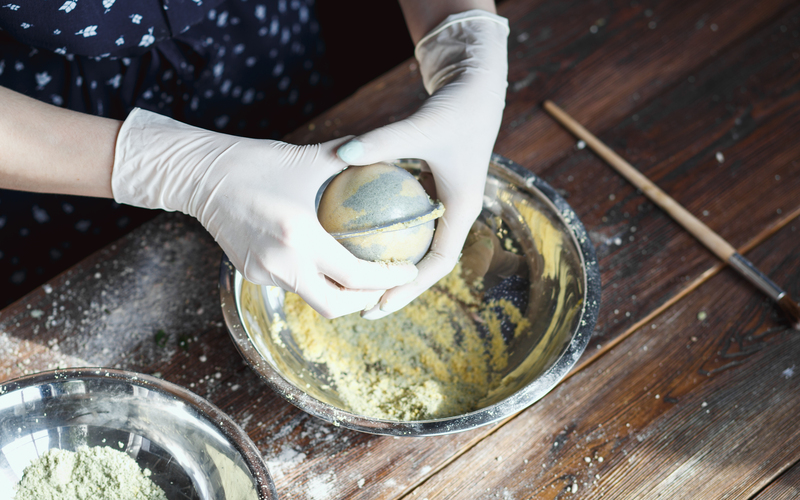Discover the Method to Sofa Cover Cleaning Without Mishaps
Posted on 21/05/2025
Discover the Method to Sofa Cover Cleaning Without Mishaps
Sofa covers serve as the protective shield for your cozy settee, preserving its elegance and comfort amid daily wear and tear. However, dirt, stains, and spills are inevitable. When it's time to revitalize your furniture, cleaning sofa covers can seem daunting, especially if you fear damaging their fabric or fit. How do you wash and care for your sofa covers without making mistakes? This comprehensive guide will reveal the secrets to sofa cover cleaning without mishaps, using effective, gentle methods that restore freshness while prolonging the life of your upholstery.

Understanding Your Sofa Cover Fabric
Before delving into the cleaning methods for sofa covers, it's critical to know your material. Sofa covers come in an array of fabrics--cotton, linen, polyester, velvet, microfiber, and blends. Each requires a slightly different care approach. Always start by checking the care label tucked inside your sofa cover, as it offers manufacturer's cleaning instructions. Ignoring this could lead to shrinking, fading, or warping of your beloved cover.
Common Sofa Cover Materials and Their Care
- Cotton or Linen: Durable and machine-washable but may shrink if washed in hot water.
- Polyester or Microfiber: Resists staining, often safe for machine washing and spot-cleaning.
- Velvet: Requires gentle handling; often best for dry cleaning or very careful hand-washing.
- Wool or Silk: Needs professional cleaning due to delicate fibers.
- Synthetic blends: Typically easy-care but always consult the label.
Step-by-Step: How to Clean Sofa Covers Safely
1. Inspect and Pre-Treat Stains
No matter if your sofa cover accumulates food stains, pet fur, or general grime, treating spots before washing is crucial.
- Remove hair and debris: Use a vacuum cleaner with an upholstery nozzle or a lint roller to remove loose dirt and pet hair.
- Pre-treat stains: Gently dab a diluted mild detergent or specialized upholstery cleaner directly onto the spot using a soft cloth. Avoid rubbing as this spreads the stain or damages the fibers. Allow it to sit for 10-15 minutes.
2. Remove the Covers Carefully
Many slipcovers are tailored to fit tightly. Unzip or loosen any fastenings and gently remove the cover, taking care not to stretch or tear seams. This step prevents distortion and elongates the life of your cover.
3. Choose the Right Cleaning Method
- Machine Washing: If the care label allows, wash the covers in cold water on a gentle cycle. Use a mild, color-safe detergent.
- Hand Washing: For delicate fabrics, soak the cover in a basin with lukewarm water and a gentle detergent. Gently agitate by hand and avoid wringing.
- Dry Cleaning: If the tag says "dry clean only," do not risk water washing. Take your cover to a professional upholstery cleaner.
- Spot Cleaning: When in doubt, spot clean stubborn marks with a soft sponge and designated cleaner for the particular fabric.
Expert Tip: Wash covers individually or with like colors only. Turn covers inside-out to preserve colors and finished surfaces.
Product Recommendations for Sofa Cover Cleaning
- Enzyme-based stain removers for organic stains like wine, food, and pet messes.
- Upholstery-safe detergents designed for colorfast materials.
- Oxygen bleach (non-chlorine) to brighten whites without colors fading.
Drying Sofa Covers the Right Way
Drying is often where mishaps happen. To avoid wrinkling, shrinking, or losing the original fit:
- Air dry whenever possible: Lay the cover flat on a clean towel in a shaded, breezy area. Hanging may cause stretching; tumble drying can shrink or roughen the fabric.
- Partial tumble drying: If the manufacturer allows, tumble dry on low for only a few minutes, then finish by air-drying to prevent creasing.
- Replace covers while slightly damp: This helps them regain their precise fit as they finish drying on the sofa.
Never dry sofa covers in direct sunlight, as UV rays can fade colors and weaken fabric fibers.
Ironing and Re-Fitting: Making Your Sofa Look Like New
For a crisp, wrinkle-free finish, iron the covers on the reverse side at the lowest safe heat setting. Place a thin cloth between the iron and the cover to protect against shine marks or burns. As soon as the cover is dry but still pliable, fit it back over the cushions and frame for a smooth appearance.
- Use a steamer for stubborn wrinkles and a professional finish.
- Smooth with hands as you refit to ensure no puckering at seams.
How Often Should You Clean Sofa Covers?
Experts recommend a deep clean for sofa covers every 3-6 months, depending on usage. In homes with pets, kids, or allergies, more frequent washing may be needed. Regular vacuuming once a week helps keep them looking and smelling fresh between washes.
Signs Your Sofa Cover Needs Cleaning
- Visible dirt or stains
- Unpleasant odors
- Allergy flare-ups
- Lack of vibrancy in color
Preventing Future Mishaps: Maintenance Tips for Sofa Covers
Maintaining clean sofa covers isn't just about periodic washing; it's about prevention and routine care. Here's how to extend the time between washes and safeguard your covers from unnecessary damage:
- Spot clean spills immediately: Blot with a clean cloth instead of rubbing.
- Rotate cushion covers regularly: This ensures even wear and tear.
- Keep pets clean and nails trimmed: Less fur and scratching means less wear.
- Use slipcover protectors: In high-traffic households, protective throws or covers make washing even easier.

Sofa Cover Cleaning FAQs
Can I wash sofa covers in the washing machine?
Most modern sofa covers are designed to withstand machine washing--but always check the label first. Use gentle cycles and mild detergent. For older or delicate fabric, opt for hand or professional cleaning.
What should I do if my sofa cover shrinks?
A shrunken cover is hard to remedy. To prevent this, avoid hot water and high heat during both washing and drying. If the cover has already shrunk, try stretching it gently while damp, but results may vary depending on the fabric.
Can I dry clean sofa covers at home?
Some home dry-cleaning kits can be used, but for best results, trust a professional. Home kits may not fully eliminate odors or tough stains, especially from heavy or structured sofas.
Is it safe to use bleach on sofa covers?
Never use chlorine bleach on colored or delicate fabric. If the care label permits, oxygen-based, non-chlorine bleach is a safer option for whites and colorfast covers.
Conclusion: Freshen Your Furniture With Confidence
Learning the right method for sofa cover cleaning allows you to enjoy a spotless, inviting living space--without the fear of fading, shrinking, or distorting your slipcovers. By understanding your fabric, pre-treating stains, using the safest washing and drying protocols, and maintaining a consistent care routine, your sofa remains the heart of your home for years to come.
Now that you've discovered the most reliable strategies for sofa cover care, you can confidently tackle dirt, spills, and day-to-day wear, making mishaps a thing of the past. Remember: always check those care tags, start gently, and treat your covers with the same respect as the rest of your cherished furnishings. Your sofa--and your visitors--will thank you!
```

